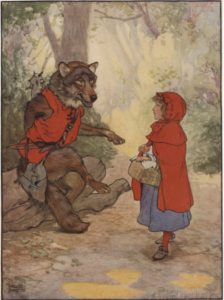Course Description and Goals
 This course is an introduction to some of the works and issues central to the study of literary and other texts for children. We will be concerned with the ways in which these texts teach, or in some cases, resist and undermine social values and cultural norms. Although this is not a history of children’s literature, we will look at historically specific representations of “the child” and “childhood” in an effort to understand how the category “child” and the experience “childhood” have been constructed differently at different moments. By attending particularly to attitudes in children’s texts toward issues of gender, class, and race, we will consider how these texts socialize their readers–and also how readers might resist).
This course is an introduction to some of the works and issues central to the study of literary and other texts for children. We will be concerned with the ways in which these texts teach, or in some cases, resist and undermine social values and cultural norms. Although this is not a history of children’s literature, we will look at historically specific representations of “the child” and “childhood” in an effort to understand how the category “child” and the experience “childhood” have been constructed differently at different moments. By attending particularly to attitudes in children’s texts toward issues of gender, class, and race, we will consider how these texts socialize their readers–and also how readers might resist).
We begin this course with the assumption that “the child” is not a given or easily knowable position in the world. It is difficult, in other words, to talk about “what a child would like” or “what a child could relate to” because (1) generally speaking, adults and not children make such claims; and (2) such generalizations erase important historical and cultural differences that shape individual experience. As we work through the texts assigned for the course, we will pay close attention to how they expose, confirm and or elide such differences, and we will consider, as well, what a text’s attitudes toward difference may have to do with its status as “great” or “classic.”
Learning Outcomes
In this course you will
- Acquire an introductory understanding of key texts and issues in the academic study of children’s literature.
- Learn to critically evaluate the ways in which children’s texts confirm, or sometimes resist social norms and values.
- Learn to identify and analyze social and historical constructions of “the child” and narratives of “childhood.”
- Develop your abilities as a reader and writer of academic discourse.
- Develop your ability to participate in an active learning community.
